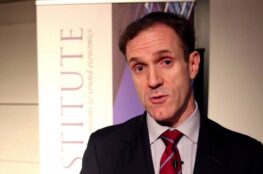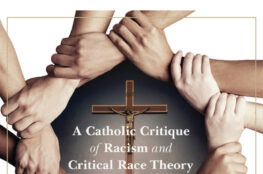I have made critical mention of Dylan Pahman’s writings on this web-log before, not because I have any personal beef with the Acton Institute’s young Research Associate, but because he happens to come down on what I judge to be the wrong side of a number of issues pertaining to religion and economics. His latest piece for Public Discourse, “Connecting Religious and Economic Liberty,” concludes that “[n]ew data suggest that countries that value and protect religious liberty offer fertile soil for economic liberty to flourish.” In the article, Pahman draws out this “suggestion” by comparing data from the Heritage Foundation’s 2014 Index of Economic Freedom and two appendices from the Pew Research Center’s recent report, Religious Hostilities Reach Six-Year High. While Pahman pays passing notice to the limits of such reports’ rating systems, he is confident that “[t]hey reliably reflect the concrete realities in the countries they rate.” He never explains why, however. Perhaps that’s a minor quibble. Ultimately, this is what Pahman concludes from his examination of the reports’ ratings:
Placing these two sets of data side by side reveals that while religious liberty can exist under any degree of economic liberty, economic liberty does not tend to exist without religious liberty. Thus, I argue that there is a strong connection between the two. Those who defend economic liberty should also promote religious liberty.
It might be helpful to pause here and consider what “economic liberty” means in this context. The ratings categories used in the Heritage report include the following: “the rule of law (property rights and freedom from corruption); limited government (fiscal freedom and government spending); regulatory efficiency (business freedom, labor freedom, and monetary freedom); and open markets (trade freedom, investment freedom, and financial freedom).”
On the surface it would seem that “economic liberty” means a socio-legal framework that jibes with neoliberal/libertarian ideology rather than according with any firm growth or distributional benchmarks. However, it seems that the elements of these various categories have to be twisted a tad if they are to prove useful in determining the degree of a country’s “economic liberty.” For instance, the “property rights” element is ambiguous since no property rights are ever absolute (nor should they be). So what type of “property rights” are considered sufficiently liberal? The United States and Western Europe score fairly high in that regard, though property rights in both regions are subject to a myriad of restrictions, both civil and regulatory. Similarly the “trade freedom” element that falls under the “open markets” category is also ambiguous, especially since two of the highest scorers—the U.S. and Western Europe again—engage in all sorts of overt and covert protectionism. So is “economic liberty” measured in relative rather than absolute terms? If that’s the case, one might wonder how useful such measurements really are.
Returning to Pahman’s primary point, assuming that there is a strong connection between religious and economic liberty in the sense that “economic liberty does not tend to exist without religious liberty,” what are the normative implications? For Pahman, a committed economic liberal, it means pitching the idea to other economic liberals (ranging from classical types all the way up through libertarians) that religious liberty has instrumental value. That is, contrary to the policy preferences of some libertarians who see very little-to-no place for religion in a reasonable and prosperous society, Pahman points to the utility of religious liberty. It’s not that religion or, rather, the true religion delivers the means to man’s final end, but rather that it can help prepare the way for an intramundane paradise of free markets, mass production, and the unbridled consumption which keeps the economic wheels turning. What once looked like the things of hell become heaven through this model.
Now, whether or not Pahman makes the case for the religious/economics connection is far less important than answering the two questions he fails to ask. First, is religious liberty intrinsically good? And second, is economic liberty desirable? Answering the second question is almost impossible unless we really have a sense of what “economic liberty” means, and that sense cannot be relative if we’re going to judge it intelligently. And if what we mean by “economic liberty” is in fact the policy goals of neoliberalism and its associated ideologies, then we—and by here I mean Catholics such as myself and Eastern Orthodox such as Pahman—might do well to ask whether such a form of “economic liberty” can be justified in the light of reason and revelation. Certainly for Catholics who are faithful to the Church’s social magisterium, “economic liberty” cannot mean unfettered capitalism or the absolutization of “free markets” (also an ambiguous concept”). Economics involves concrete moral matters which the Church has been entrusted to speak on authoritatively. Any form or iteration of “economic liberty” which fails to cohere to what the Church teaches must be modified or otherwise rejected.
As for religious liberty, the present position of Christians living in increasingly secularized democracies is no doubt aided by a pragmatic grant of religious freedom across the board, but one can only take that so far. The difficulty with Pahman’s approach is that he seems to want to raise religious liberty up as a secure and unimpeachable principle, though not because it is right absolutely but rather so it can serve as an adjunct to a certain economic orientation which, as noted, may or may not be justifiable in the light of Christian teaching.



